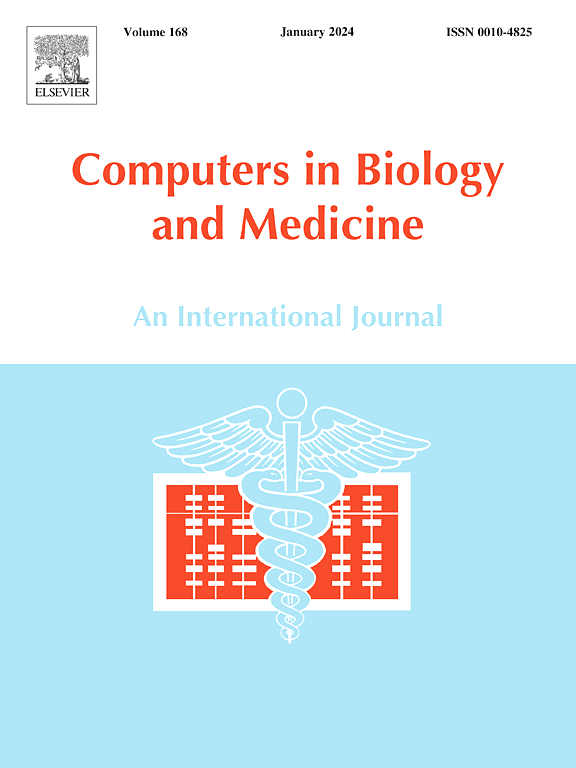Development and validation of a deep learning-based survival prediction model for pediatric glioma patients: A retrospective study using the SEER database and Chinese data
IF 7
2区 医学
Q1 BIOLOGY
引用次数: 0
Abstract
Objective
Develop a time-dependent deep learning model to accurately predict the prognosis of pediatric glioma patients, which can assist clinicians in making precise treatment decisions and reducing patient risk.
Study design
The study involved pediatric glioma patients from the Surveillance, Epidemiology, and End Results (SEER) Registry (2000–2018) and Tangdu Hospital in China (2010–2018) within specific time frames. For training, we selected two neural network-based algorithms (DeepSurv, neural multi-task logistic regression [N-MTLR]) and one ensemble learning-based algorithm (random survival forest [RSF]). Additionally, a multivariable Cox proportional hazard (CoxPH) model was developed for comparison purposes. The SEER dataset was randomly divided into 80 % for training and 20 % for testing, while the Tangdu Hospital dataset served as an external validation cohort. Super-parameters were fine-tuned through 1000 repeated random searches and 5-fold cross-validation on the training cohort. Model performance was assessed using the concordance index (C-index), Brier score, and Integrated Brier Score (IBS). Furthermore, the accuracy of predicting survival at 1, 3, and 5 years was evaluated using receiver operating characteristic (ROC) curves, calibration curves, and the area under the ROC curves (AUC). The generalization ability of the model was assessed using the C-index of the Tangdu Hospital data, ROC curves for 1, 3, and 5 years, and AUC values. Lastly, decision curve analysis (DCA) curves for 1, 3, and 5-year time frames are provided to assess the net benefits across different models.
Results
A total of 9532 patients with pediatric glioma were included in this study, comprising 9274 patients from the SEER database and 258 patients from Tangdu Hospital in China. The average age at diagnosis was 9.4 ± 6.2 years, and the average survival time was 96 ± 66 months. Through comprehensive performance comparison, the DeepSurv model demonstrated the highest effectiveness, with a C-index of 0.881 on the training cohort. Furthermore, it exhibited excellent accuracy in predicting the 1-year, 3-year, and 5-year survival rates (AUC: 0.903–0.939). Notably, the DeepSurv model also achieved remarkable performance and accuracy on the Chinese dataset (C-index: 0.782, AUC: 0.761–0.852). Comprehensive analysis of DeepSurv, N-MTLR, and RSF revealed that tumor stage, radiotherapy, histological type, tumor size, chemotherapy, age, and surgical method are all significant factors influencing the prognosis of pediatric glioma. Finally, an online version of the pediatric glioma survival predictor based on the DeepSurv model has been established and can be accessed through https://pediatricglioma-tangdu.streamlit.app.
Conclusions
The DeepSurv model exhibits exceptional efficacy in predicting the survival of pediatric glioma patients, demonstrating strong performance in discrimination, calibration, stability, and generalization. By utilizing the online version of the pediatric glioma survival predictor, which is based on the DeepSurv model, clinicians can accurately predict patient survival and offer personalized treatment options.
基于深度学习的儿科胶质瘤患者生存预测模型的开发与验证:使用 SEER 数据库和中国数据的回顾性研究。
目的:开发一种时间依赖性深度学习模型,以准确预测小儿胶质瘤患者的预后:开发一种与时间相关的深度学习模型,以准确预测小儿胶质瘤患者的预后,从而协助临床医生做出精准的治疗决策,降低患者风险:该研究涉及特定时间范围内来自中国监测、流行病学和终末结果(SEER)登记处(2000-2018年)和唐都医院(2010-2018年)的小儿胶质瘤患者。在训练中,我们选择了两种基于神经网络的算法(DeepSurv、神经多任务逻辑回归[N-MTLR])和一种基于集合学习的算法(随机生存森林[RSF])。此外,还开发了一个多变量 Cox 比例危险(CoxPH)模型用于比较。SEER 数据集被随机分为 80% 用于训练,20% 用于测试,而唐都医院数据集则作为外部验证队列。通过在训练队列中重复 1000 次随机搜索和 5 倍交叉验证,对超级参数进行了微调。使用一致性指数(C-index)、布赖尔评分(Brier score)和综合布赖尔评分(IBS)评估模型性能。此外,还使用接收器操作特征曲线(ROC)、校准曲线和 ROC 曲线下面积(AUC)评估了预测 1、3 和 5 年生存率的准确性。利用唐都医院数据的 C 指数、1、3、5 年的 ROC 曲线和 AUC 值评估了模型的泛化能力。最后,提供了1年、3年和5年的决策曲线分析(DCA)曲线,以评估不同模型的净效益:本研究共纳入 9532 例小儿胶质瘤患者,其中 9274 例来自 SEER 数据库,258 例来自中国唐都医院。平均诊断年龄为(9.4±6.2)岁,平均生存时间为(96±66)个月。通过综合性能比较,DeepSurv 模型的有效性最高,在训练队列中的 C 指数为 0.881。此外,它在预测 1 年、3 年和 5 年生存率方面也表现出了极高的准确性(AUC:0.903-0.939)。值得注意的是,DeepSurv 模型在中国数据集上也取得了显著的性能和准确性(C 指数:0.782,AUC:0.761-0.852)。DeepSurv、N-MTLR和RSF的综合分析表明,肿瘤分期、放疗、组织学类型、肿瘤大小、化疗、年龄和手术方式都是影响小儿胶质瘤预后的重要因素。最后,基于 DeepSurv 模型的儿科胶质瘤生存预测在线版本已经建立,可通过 https://pediatricglioma-tangdu.streamlit.app.Conclusions 访问:DeepSurv模型在预测小儿胶质瘤患者生存率方面表现出卓越的功效,在辨别、校准、稳定性和泛化方面都有很强的表现。通过使用基于 DeepSurv 模型的在线版儿科胶质瘤生存预测器,临床医生可以准确预测患者的生存情况,并提供个性化的治疗方案。
本文章由计算机程序翻译,如有差异,请以英文原文为准。
求助全文
约1分钟内获得全文
求助全文
来源期刊

Computers in biology and medicine
工程技术-工程:生物医学
CiteScore
11.70
自引率
10.40%
发文量
1086
审稿时长
74 days
期刊介绍:
Computers in Biology and Medicine is an international forum for sharing groundbreaking advancements in the use of computers in bioscience and medicine. This journal serves as a medium for communicating essential research, instruction, ideas, and information regarding the rapidly evolving field of computer applications in these domains. By encouraging the exchange of knowledge, we aim to facilitate progress and innovation in the utilization of computers in biology and medicine.
 求助内容:
求助内容: 应助结果提醒方式:
应助结果提醒方式:


